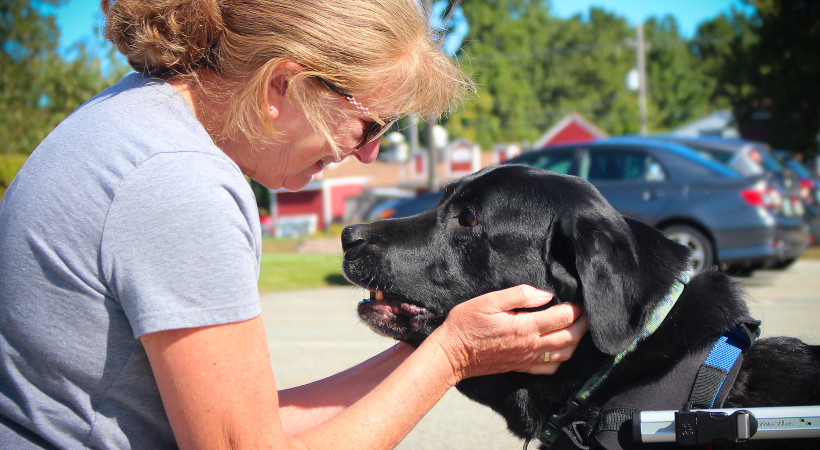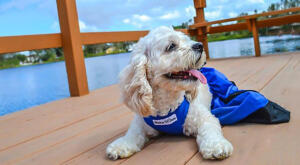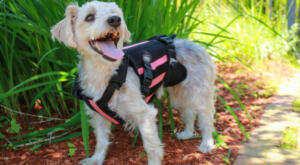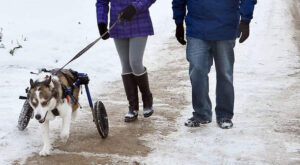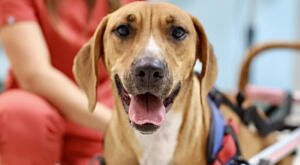If you have a pet with a disability, then you have an excellent opportunity to be there for your furry friend. You can provide the support they deserve. Just know you don’t have to go it alone. When you try to take on too much at once, not only can you fail to provide the proper care for your pet, but you’ll also put your mental health at risk.
You need to create a support group of friends or professionals. They can help you and your pet get through the tough times. Let’s dive into how to build this support group and the benefits of doing so.
You Shouldn’t Be Alone
You may not consider yourself a “people person.” Still, you need to find some kind of support when caring for a pet with a disability. Yes, it’s your pet and your responsibility, but if you try to take on too much at once, it could deplete your energy and put you in a bad place. Your pet is always there for you and will always be the perfect companion. Still, you also need human interaction.
Isolation and Anxiety
There’s a connection between isolation and anxiety. If you’re dealing with both, then even the love of your pet may not keep you happy and satisfied. When you’re isolated for an extended period, you can start to feel lonely, depressed, and unwanted. The anxiety can add up when you’re also trying to care for your pet.
Sometimes you may be isolated because you don’t have many people coming around. Other times, the isolation can be self-inflicted, especially if you frequently cancel plans and dread going into social activities. When you spend too much time alone, you can feel anxious when it comes time to be with others. So, you decide to stay home, but then you’re upset. It can be an endless cycle. You may be sad about your pet, but you must also prevent anxiety. You and your pet need to get out and engage with the world while practicing self-care and using coping mechanisms like yoga and medication to keep your mind in a good place.
Making Memories
Also, remember that it’s not all doom and gloom and that your pet can be the perfect companion. These pets often have more character because they’ve overcome traumatic things that have ultimately made them stronger, and you can learn about yourself through them. If your pet is also older, this is a great time to enjoy their golden years. Take photos in different settings, capture their distinguished looks, and create memories you can continue to hold onto over time.
The best way to socialize and find adequate support is to try and form a group of like-minded individuals who also have a pet with a disability or may have in the past. This arrangement allows you to get advice from others about coping with your pet and finding the best solutions for their needs.
Online Support
Look online, meet people at the local shelter or pet store, or talk to folks at the dog park and try to get a group together. You can find many pet-centric apps online to connect with other owners. Many people like Offleash’d, which is an app that allows you to meet other pet people with similar interests and situations. There’s also Pawscount, which allows you to meet other pet owners in your community. Both of these apps are available on iOS and Android phones.
When you start building your support community, you can either meet at each other’s houses to discuss current needs or get out and boost your dog’s socialization by going on playdates to the park or helping them with water therapy. Make sure to exchange contact information and reach out whenever you’re having a hard day or your pet comes across a new obstacle you’re unsure how to overcome.
No matter what type of supportive community arrangement you set up, make sure to prioritize safety if you’re going to be driving your pet to get-togethers. When it comes to dogs in cars, no doubt you’re well aware not to leave them in a hot car. But there’s also the matter of securing them in the vehicle during transport. There are harnesses, crates, and carriers that are actually crash-tested with dogs in mind. Or, if you’re already in the market for a new car, it might be time to consider one that comes with a crash-tested pet barrier installed.
Get Support From Professionals
While you should absolutely meet new friends in your town or neighborhood, there may come a time when you need to elevate your support group. Find professionals who can provide the help you truly need. While you’re looking online for friends, you can also search for professionals who have worked with pets with disabilities in the past. You might find a manufacturer who can provide a mobility apparatus to help your pet get around. There are also experts who specialize in pets with hearing, vision, and other sensory factors.
There are helpful resources for just about every type of issue and circumstance. There’s even the Pet Assistance and Support (PAS) Program, which helps make accommodations for pets inside homeless shelters. The point is that you don’t have to go it alone.
Create Friendly Groups
Regardless of who you meet or when you meet them, it’s important that you make the event as friendly and inclusive as possible when your support group gathers. When you get together, introduce everyone so they don’t feel awkward and everyone can get along right away. Also, ensure that the event is accessible to everyone and their pets. Try to go to places with ramps, accessible entrances, and adequate lighting so all people and animals can get where they need to go safely.
You also need to plan appropriately to introduce your pets so they aren’t skittish or afraid to be close to one another. Try introducing the pets on neutral ground outside where the dogs can get used to each other without distraction. Also, keep them on their leash so they don’t get away, but keep the leash loose so they don’t feel restrained or vulnerable.
It may also be necessary to make accommodations based on the disability. So, you might attach bells to your dog’s collar if they’re interacting with a blind dog. If your pet uses a wheelchair, give the other pet time to get used to the apparatus so they don’t get nervous. As their owner, remember to remain cheerful during the interaction because many dogs are sensitive to your emotional state, and if you’re positive, they’ll feel better too.
Conclusion
Building a support community is necessary as you care for your pet with a disability. Socialization is important for your dog or cat and yourself, and you may find that joining others makes you both happier than ever.
Guest Author:
Charlie Fletcher
Charlie Fletcher is a freelance writer and pet parent from the lovely “city of trees”- Boise, Idaho. Her love of writing pairs with her passion for animal rights and search for the truth. You can find more of her writing on her Contently.
Related Articles:

